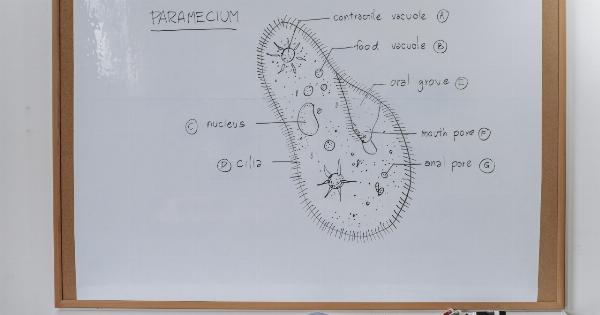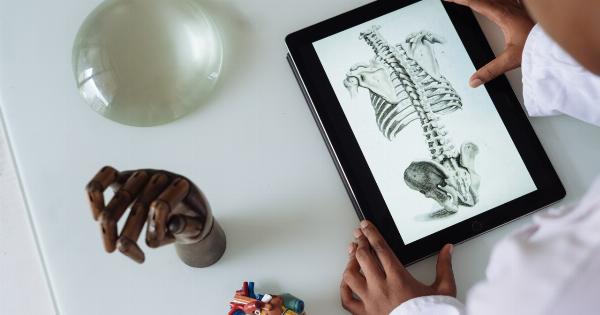Fibroids are noncancerous growths that develop in or around the uterus. They are also known as uterine fibroids or leiomyomas.
These growths are made up of muscle and fibrous tissue and can vary in size, ranging from as small as a seed to as large as a grapefruit. In some cases, women may have multiple fibroids.
Causes and Risk Factors
The exact cause of fibroids is unknown, but several factors may contribute to their development:.
- Hormones: Estrogen and progesterone, the two hormones that regulate the menstrual cycle, can promote the growth of fibroids.
- Family history: If your mother, sister, or grandmother has had fibroids, your risk of developing them increases.
- Age: Fibroids are more likely to occur in women of reproductive age, usually between their 30s and 40s. They tend to decrease in size after menopause.
- Obesity: Being overweight or obese can increase the risk of developing fibroids.
- Race: African-American women are more likely to develop fibroids at a younger age and may have more severe symptoms compared to women of other races.
Symptoms and Complications
Many women with fibroids may not experience any symptoms at all. However, when symptoms do occur, they can vary in intensity and may include:.
- Heavy menstrual bleeding: Fibroids can cause heavy or prolonged menstrual periods, sometimes accompanied by blood clots.
- Pelvic pain or pressure: Fibroids can create a feeling of fullness or pressure in the lower abdomen or back.
- Frequent urination: Large fibroids can press against the bladder and result in increased frequency of urination.
- Difficulty emptying the bladder: In some cases, fibroids can obstruct the bladder, leading to difficulty emptying it completely.
- Constipation: Large fibroids can compress the rectum and cause constipation.
- Infertility: Depending on their size and location, fibroids can interfere with fertility and the ability to conceive.
In rare cases, fibroids can cause severe symptoms or complications, such as:.
- Iron deficiency anemia: Heavy menstrual bleeding can lead to low iron levels and anemia.
- Urinary tract infections: Difficulty emptying the bladder completely may increase the risk of urinary tract infections.
- Reproductive issues: Fibroids can increase the risk of pregnancy complications, such as miscarriage or preterm labor.
Diagnosis
If you suspect you have fibroids or are experiencing symptoms, it is important to consult with your healthcare provider. They can perform a physical examination and recommend further tests, including:.
- Ultrasound: This imaging test uses sound waves to create images of the uterus and can help determine the size, location, and number of fibroids.
- Magnetic resonance imaging (MRI): An MRI can provide more detailed images of the uterus and fibroids, helping healthcare providers plan appropriate treatment.
- Hysteroscopy: This procedure involves inserting a thin, lighted tube through the vagina and cervix to examine the inside of the uterus.
- Biopsy: In rare cases when malignancy is suspected, a small tissue sample may be taken and examined under a microscope.
Treatment Options
The treatment for fibroids depends on various factors, including the severity of symptoms, the size and location of the fibroids, and a woman’s desire for future fertility. Treatment options include:.
- Watchful waiting: If fibroids are small and not causing significant symptoms, healthcare providers may recommend regular monitoring without immediate intervention.
- Medications: Hormonal medications, such as birth control pills or gonadotropin-releasing hormone (GnRH) agonists, can help regulate the menstrual cycle and reduce the size of fibroids.
- Uterine artery embolization: This procedure involves blocking the blood supply to the fibroids, causing them to shrink and die.
- Myomectomy: In a myomectomy, the surgeon removes only the fibroids, leaving the uterus intact. This option is often recommended for women who wish to preserve their fertility.
- Hysterectomy: A hysterectomy involves the surgical removal of the uterus. It is considered a last resort option for women who do not wish to have future pregnancies or when other treatments have failed.
Prevention and Self-Care
While it’s not always possible to prevent fibroids, adopting a healthy lifestyle may help reduce the risk and manage symptoms:.
- Exercise regularly: Engaging in moderate-intensity physical activity most days of the week can contribute to overall well-being.
- Maintain a healthy weight: Excess weight can increase estrogen levels and the risk of developing fibroids.
- Eat a balanced diet: Incorporate plenty of fruits, vegetables, whole grains, and lean proteins into your meals.
- Manage stress: Find healthy ways to cope with stress, such as through relaxation techniques or engaging in activities you enjoy.
- Discuss family planning: If you have concerns about fibroids affecting your fertility or pregnancy, discuss them with your healthcare provider.
Conclusion
Fibroids in the uterus are common noncancerous growths that can cause various symptoms and complications. While the exact cause is unknown, factors such as hormones, family history, age, obesity, and race may contribute to their development.
If you suspect you have fibroids or are experiencing symptoms, it is important to consult with your healthcare provider for proper diagnosis and treatment options. By adopting a healthy lifestyle and managing stress, you may be able to reduce the risk and manage symptoms associated with fibroids.


























